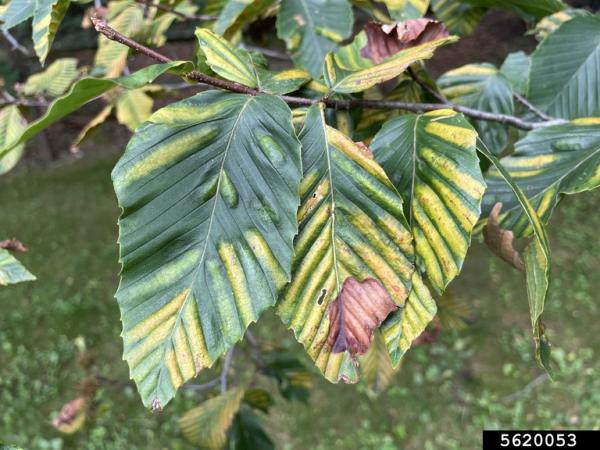Litylenchus crenatae mccannii ssp. n. (Carta et al. 2020)
Beech leaf disease
L. crenatae was originally described from Japan, but its role in the disease complex (or whether there is an additional pathogen involved) is not fully understood (Burke et al. 2020; Carta et al. 2020)
First observed in Ohio in 2012 (Burke et al. 2020)
Unknown; may have arrived in North America through the transport of wood with an invertebrate vector (Carta et al. 2020)
Disease of beech trees (Fagus spp.) that disfigures leaves and can lead to tree mortality (Burke et al. 2020)

Beech leaf disease, damage
Photo by Matthew Borden; Barlett Tree Experts
Find more images
Spotlights
All Resources
Selected Resources
The section below contains highly relevant resources for this species, organized by source.
Partnership
Federal Government
International Government
State and Local Government
Academic
Burke, D.J., A.J. Hoke, and J. Koch. 2020. The emergence of beech leaf disease in Ohio: Probing the plant microbiome in search of the cause. Forest Pathology 50(2):e12579.
Carta, L.K., Z.A. Handoo, S. Li, et al. 2020. Beech leaf disease symptoms caused by newly recognized nematode subspecies Litylenchus crenatae mccannii (Anguinata) described from Fagus grandifolia in North America. Forest Pathology 50(2):e12580.
